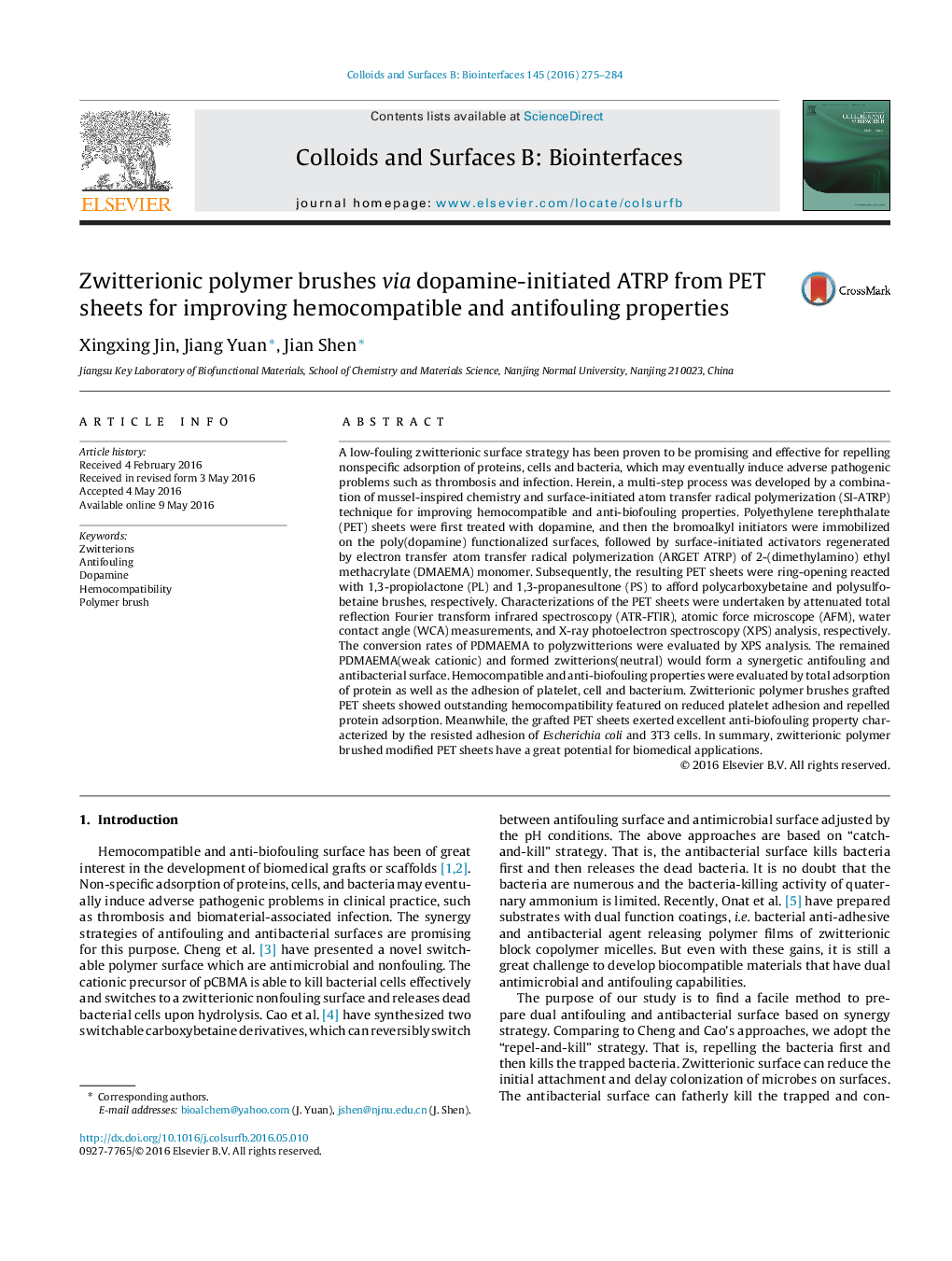| کد مقاله | کد نشریه | سال انتشار | مقاله انگلیسی | نسخه تمام متن |
|---|---|---|---|---|
| 598949 | 1454259 | 2016 | 10 صفحه PDF | دانلود رایگان |

• Polyzwitterions along with weak cationic PDMAEMA surfaces are formed via dopamine-initiated ATRP.
• The grafted PET sheets show outstanding hemocompatibility and anti-biofouling property.
• Polyzwitterions along with weak cationic PDMAEMA surfaces are ideal for antifouling and antibacterial usage.
A low-fouling zwitterionic surface strategy has been proven to be promising and effective for repelling nonspecific adsorption of proteins, cells and bacteria, which may eventually induce adverse pathogenic problems such as thrombosis and infection. Herein, a multi-step process was developed by a combination of mussel-inspired chemistry and surface-initiated atom transfer radical polymerization (SI-ATRP) technique for improving hemocompatible and anti-biofouling properties. Polyethylene terephthalate (PET) sheets were first treated with dopamine, and then the bromoalkyl initiators were immobilized on the poly(dopamine) functionalized surfaces, followed by surface-initiated activators regenerated by electron transfer atom transfer radical polymerization (ARGET ATRP) of 2-(dimethylamino) ethyl methacrylate (DMAEMA) monomer. Subsequently, the resulting PET sheets were ring-opening reacted with 1,3-propiolactone (PL) and 1,3-propanesultone (PS) to afford polycarboxybetaine and polysulfobetaine brushes, respectively. Characterizations of the PET sheets were undertaken by attenuated total reflection Fourier transform infrared spectroscopy (ATR-FTIR), atomic force microscope (AFM), water contact angle (WCA) measurements, and X-ray photoelectron spectroscopy (XPS) analysis, respectively. The conversion rates of PDMAEMA to polyzwitterions were evaluated by XPS analysis. The remained PDMAEMA(weak cationic) and formed zwitterions(neutral) would form a synergetic antifouling and antibacterial surface. Hemocompatible and anti-biofouling properties were evaluated by total adsorption of protein as well as the adhesion of platelet, cell and bacterium. Zwitterionic polymer brushes grafted PET sheets showed outstanding hemocompatibility featured on reduced platelet adhesion and repelled protein adsorption. Meanwhile, the grafted PET sheets exerted excellent anti-biofouling property characterized by the resisted adhesion of Escherichia coli and 3T3 cells. In summary, zwitterionic polymer brushed modified PET sheets have a great potential for biomedical applications.
Figure optionsDownload as PowerPoint slide
Journal: Colloids and Surfaces B: Biointerfaces - Volume 145, 1 September 2016, Pages 275–284